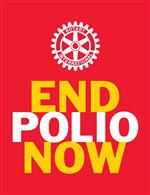Water: Our Looming Crisis
How Rotarians are Rising to the Challenge of Our looming Water Crisis
By Anthony G. Craine*
20 March 2006
Water is life. An adult can survive without food for weeks, but the human body can't go more than a few days without water. Yet in our world today, an alarming number of people struggle every day to get it.
"It's daunting when you think of it," says Ron Denham, a member of the Rotary Club of Toronto-Eglinton, Canada, and general coordinator of the Water, Health, and Hunger Concerns Resource Group for 2005-06, "the number of people affected â¿¢ 1.2 billion without access to safe drinking water, 2.4 billion without sanitation."
In rural communities in Africa and Asia, women and children can spend several hours of their day retrieving water from some far-off source, time otherwise spent with family or supporting their children. And the quality of that water they access often varies, leaving them susceptible to contaminants and water-borne diseases. According to the United Nations, some 6,000 children die every day from diseases associated with the lack of safe drinking water, inadequate sanitation, and poor hygiene.
The painful irony is that water appears to be abundant on our "blue planet." It covers more than two-thirds of the earth's surface. But only 2.5 percent of that water is fresh water. And 99.7 percent of that freshwater is unavailable, trapped in glaciers, ice sheets, and mountainous areas. This means that about 0.3 percent of the planet's freshwater is shared by all of its people. And while the amount of available freshwater remains stable, the number of people sharing it continues to grow.
Few things affect human survival, and the production of everyday necessities, as directly as water does. But with such a broad range of challenges and the unfathomable numbers of people affected, how can Rotary clubs approach the issue with any hope of making a difference?
Denham says that there is amazingly simple, affordable technology to assist in solving the vexing problem of supplying water to those who don't have access. Sometimes the key is for clubs to identify a community's needs and to be sure that the work done results in a realistically sustainable benefit.
Biosand filters, he says, are a cheap, reliable way to turn contaminated water into drinkable water. Rotarians from Calgary, Alberta, Canada, have set up a factory in Haiti to manufacture the filters and implement them in that country.
An even cheaper tool for water purification seems almost too good to be true: plastic soda bottles. Bottles made from polyethylene terephthalate (PET) can be filled with dirty water and placed in sunlight. The sun's rays do all the work.
"Glass won't do it, but PET plastic will," he says.
Creating awareness is also a key ingredient in the work that Rotary clubs can do, Denham says. He points to 22 March â¿¢ World Water Day â¿¢ as an opportunity. (Read more on how Rotarians can participate in World Water Day 2006.)
"We'd like every Rotary club to feature a speaker on water during that week," he says.
The range of water project opportunities available to the world's Rotary clubs is varied and, above all, necessary.
"The important thing is not to be daunted by the immensity of the task," Denham says. "The reality is that Rotarians in their own way are having a huge impact on the water-deprived people of the world. I think of a simple adage: How do you eat an elephant? One bite at a time."
This article is © 2005 Rotary International and is provided for the non-profit use of Rotarians worldwide; commercial use is prohibited. The article may be quoted, excerpted or used in its entirety, but the information should not be changed or modified in any way. Read more information in the RI copyright notice.
Download the website sponsorship guide









